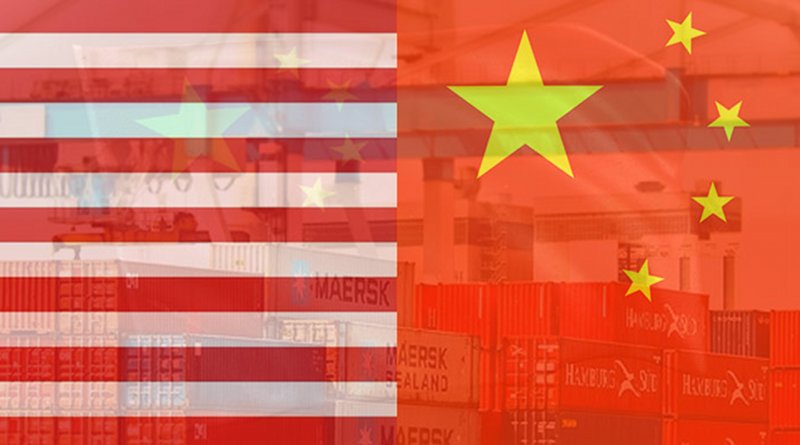China’s Trade Significance Wanes With Supply Chain Wreaked By COVID-19: US A Better Option – Analysis
China re-emerged as the largest trading partner of India in 2020-21, outplaying the USA, after a break of two years. Prior to this, China was the leading trade partner for five years from 2013-14 to 2017-18. There was a structural change in India-China trade in the pre- and post-COVID-19 pandemic phase. In the post COVID era, export was the trigger for growth. In pre-COVID period import was the springboard for growth. During 2020-21, exports to China increased by 27.5 percent and imports declined, while during 2013-14 to 2017-18, exports to China declined and imports increased by over 50 percent. Overall, India has historically witnessed a large unfavorable trade balance with China.
Iron ore was the key factor that attributed to the surge in exports to China in 2020-21, increasing by 85.5 percent, and now accounts for one-fifth of India’s total export to China. Nonetheless, the spike in exports should not be cause for cheer for a major turnaround in the trade structure between the two countries. Even though iron ore was the trigger for exports, it is not poised to be the engine for export growth in the longer term. It accounts for 1.8 percent of the total import of China’s iron ore. Australia and Brazil are the major suppliers of iron ore. Hence, India is not an alternative to Australia and Brazil.
China is hegemony in global GVC. It is the biggest manufacturing hub, accounting for more than 28 percent of the global manufacturing. The COVID 19 pandemic tinkered a rethinking among the countries of their perspective role in GVC and the related risks. Many countries are re-crafting their manufacturing activities, by shifting from China to domestic area or harboring in other low cost countries. Japanese incentive to decouple from China is a case in point.
As a result, some countries and MNCs are considering post-pandemic GVC configuration – such as transition to economic detachment and focus on self developed value chain. This trend will lead to global GVC instability. Given this, two challenges are betting China’s GVC – US-China trade war and COVID 19. Eventually, this trend will reduce China’s global power in GVC.
With GVC contracting to domestic area and other low cost countries in Asia, China’s exports are likely to be vulnerable in longer term. Global demand for Chinese capital goods and intermediate goods will suffer a significant negative impact according to a study by School of Business, Xinxiane, China and School of Economics, Tianjin, China. The initial impact of the outbreak resulted a sharp fall of Chinese exports and break of China’s value chain. China is mired in the mid and low end of GVC. COVID 19 pandemic and US-China trade war exposed China to the detachment of GVC. Eventually, it wreaks the FDI induced GVC also, according to the study.
India-China trade pivots on China’s supply chain. More than one-third of imports from China comprised of electronic and telecommunication equipments, components and parts, which toil on supply chain. With the outbreak of COVID 19, which wreaked havoc on the Chinese supply chain, India gradually shifted to other low cost countries, such as Vietnam. During the past two years, imports of electronic and telecommunication equipments, components and parts from China witnessed a slender growth, resulting Vietnam the growing supplier of supply chain products.
Vietnam emerged as a potential challenger as alternative to China in the world. Ever since the US-China trade war intensified, many importers in America, EU and Japan shifted for an alternative supply chain. According to the US Census Bureau, imports from Vietnam into the USA jumped by 33 percent in the first of 2019. Low labour costs emerged a better bet for American investors to shift to Vietnam. It is almost 50 percent lower than China.
India’s relations with Vietnam witnessed a new face with Indian Prime Minister Narendra Modi’s visit to Vietnam in September 2016 – the first visit of an Indian Prime Minister in 15 years. A back-to-back visit by newly elected Vietnam President Tran Dai Quang to India reinforced the ties.
Given the bitterness growing with China due to repeated face offs in Ladakh and China losing its rhetoric as a supply chain due to COVID 19, India has been on a big hunt for alternatives to China. RIS – a government think tank – identified 327 items of imports from China that were to be procured from alternative sources. They included mostly telecommunication equipments, cell phones, electrical apparatus, integrated circuits and drugs intermediates.
A long over-dependence on China raised concerns over the Indian economic sovereignty, particularly when both countries were at loggerheads due to repeated border disputes. The government of India put barriers to the economic engagement with China, in the wake of spike in security threat. It blocked 59 Chinese Apps, imposed stricter regulations for Government procurement, restricted the import of color TVs. It shifted FDI approval for China through Government route – a stricter route – from Automatic route.
Against these backdrops, the USA should be advocated as a better trading partner for India. The merit lies more with the USA. India’s trade with USA is perked up by its exports, unlike China where imports is the lever. India’s export basket to the USA comprised of consumer goods, which established a separate market segment in the USA. Besides, exports to the USA have a cascading impact on employment generation in India, as they relate to SMEs, such as garments, marine and agricultural products.
Exports are an important pillar for growth during the Modi 2 period. India targets US$660 billion in exports, to build up the US$5 trillion Indian economy by 2024-25.

